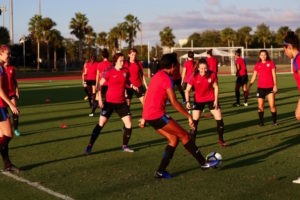
There has been a lot of discussion lately in the self-defense training community about the actual use of knives in a defensive context. The current trend with a number of people is to essentially conclude “we are not seeing it happen very much on video” with the follow on strong implication that it is fairly useless to a) carry a knife for self-defense, and b) it is a waste of time to train it. This is a case of misplaced critical thinking. Let’s take a deeper look at the missed points.
Before we go too far though, let’s look at some actual documented incidents of defensive knife use to show that, yes, Virginia, people use knives to protect themselves.
A female jogger:
https://nypost.com/2017/11/15/female-jogger-fights-off-groper-then-chases-him/
And another jogger story:
http://www.mlive.com/news/detroit/index.ssf/2016/10/jogger_uses_knife_to_fend_off.html
A police officer’s story:
http://knifenews.com/cop-reaches-for-knife-in-fight-for-his-life/
And another private citizen uses a knife:
http://www.kptv.com/story/35482301/police-man-uses-utility-knife-to-defend-himself-against-intruder
And on, and on, and on. These were all found with a simple google search. So for all the folks crying that we never see it happen, I really have to wonder if they are truly ignorant, or willfully so?
So let’s get to the meat of the matter.
First of all, there is the underlying statement that if we don’t see it on video, then it is not happening. While there are many video clips of incidents of criminal and defensive fight activity (whether empty handed or with weapons) is captured on video, many more are not. How do we know? Take a look at the numbers we know. In a study by the Violence Policy center in 2013, using FBI statistics over a five year period, the estimate is that there are over 67,000 (which is probably on the low ball end of things since the VPC is strongly anti-gun) defensive uses of a gun in a given year. Compare that to how many videos we see. And that is just the US. Add in other countries, and the number will go up considerably. So if we are going by what we “see”, we are missing a ton of actual and factual information. Now, let’s take this further. The Bureau of Justice Statistics reports that in a given year, firearms are used in 40% of violent crimes, meaning that 60% of the time, a gun is NOT present. So we are literally seeing the tiniest tip of the iceberg when it comes to what we see or what is commonly reported when we overly focus on firearms being involved. While we can learn an awful lot of things from real world videos of violence, we need to be very careful in coming away with hard conclusions in all aspects of self-defense.
Second, there are valid reasons why the use of knives in self-defense may be vastly underreported. There is not a good organized large body of proponents of knife self-defense that has the money behind them that the gun industry has, so there are few places that have taken the time to do what people like Professor John Lott, or the National Sports Shooting Foundation or the NRA has done to promote the idea of good guys using guns legally to protect themselves. The money is not there in the knife world like it is in the gun community, and what there is basically goes to promoting either hunting knives or high end custom blades. There is no NRA equivalent for knives, so no one has funded real research. It is a hit or miss affair. And what we tend to forget is that up until the 1980’s, there was no real good documented study or compilation of defensive gun use. This whole aspect is a recent trend, so it is not that much of a surprise to anyone who pays attention that knife use may not be as deeply understood as we would like.
Another point to consider in why defensive knife use is under reported is that many people who arm themselves with knives for defense do so because they cannot afford a gun, and lower socio-economic level people have a tendency to operate outside paperwork. As a glaring example, take a look at statistics on how underreported the population in that community is by the census. People who exist in those communities tend to view all “authorities” with suspicion, and prefer to not interact with officials anymore than they absolutely have to. And any experienced police officer will tell you that a lot of crime and violence in poorer areas are handled amongst themselves and never get reported. So it is not a stretch at all to conclude that the same people who hide from census takers are also not going out of their way to let the po-po know that they had to stab someone who was trying to rape them.
Another obvious area where knife use will go overlooked is in a Non-Permissive Environment (NPE). If you are carrying a knife because it is easier to hide than a firearm in such an environment, you may not want to report it if you end up using it. It may be a case of using it enough for the attacker to break off his attack and the knife user makes an escape. Calling authorities at that point may not be the smartest thing, especially if you are in a locale particularly hostile to self-defense such as NYC, LA, San Francisco, or Washington DC, or even more worrisome, in a foreign country. A case in point is a place like Singapore. While it is a “democratic” country, it is a stunning example of the mommy state that is in charge of every moment of its citizen’s lives. If you throw chewing gum on the sidewalk you go to jail. I felt like it was an Epcot Center designed by Hitler when I spent a week there a few years ago. Can you imagine using a small folding knife to defend yourself as a tourist? At a minimum, you are spending a few days in a jail that is not known for being a welcoming place. I have been to Rio as well and have no interest in testing my survival skills in a Brazilian prison. So it is not hard to imagine that saying knife use in a self-defense context is under reported in places like that is a major understatement.
Now, all those above points are, in my opinion, good and reasonable justifications to suggest that there are far more instances of knife use than we currently are aware of. However, I think there are two more incredibly huge reasons we don’t see more defensive knife use, especially in the US. These two overwhelming issues are 1) that people don’t train to access and deploy a knife under stress and 2) they carry a sub-optimal blade in a bad location.
Now before we get deeper into this, let me give you a bit of background for my reasoning and to show you that I am not making this stuff up out of thin air. I have been training fighting systems that heavily emphasize the knife since 1984. Not just dabbling, but deeply diving into them, to include instructor certifications in multiple Filipino, Indonesian, and modern eclectic methods. I have also been carrying a knife on a daily basis since ’84 when I bought my first Spyderco (a Police model), and have had one on me pretty much everyday since then. I have trained under some of the most famous knife instructors of the last 30 years, and I have devoted quite literally tens of thousands of hours to working and developing knife skills. What is perhaps even more pertinent is that I have been teaching these skills to thousands of people since 1987. So the following is based on a bit of breadth and depth in the subject matter.
Let’s address the first point from above about people not training the knife in an appropriate manner. What I have seen over the past 30 years is tons of people and lots of methodologies working knife fighting, but absolutely ZERO working accessing and deploying the blade under real world conditions. Everyone loves to work the fun bit- using the knife when it is out and ready to go and you are mentally and physically prepared to fight. No one, outside of a very tiny group, works getting a knife into play when they have to deal with the adrenal dump of a sudden and startling threat, and then has to integrate the knife draw with maintaining distance and trying to deploy it effectively. It does not seem like it would be too hard until you actually try to do it, and then everything falls apart, as anyone who has done the work will tell you. Those of us who spend a lot of time here see it over and over again. Run someone through a very basic deployment drill against an attacker standing less than 7 or 8 yards away who can try to grab you as soon as you move, and what will inevitably happen is the knife is jammed up. Even those with a some athleticism, and a bit of training, as well as having the advantage of knowing what is coming in the drill, and you see failure far more often than you see success. So it is no surprise at all that the person on the street who has given zero thought to these issues, and just as likely has not taken any time to develop or practice good situational awareness skills will not get a knife out and into play, even if it is knife they carry all day long.
To exacerbate this problem, we come to problem number two – the EDC knife is invariably carried in a suboptimal position, and is a suboptimal blade at that. It is an exceedingly rare person who carries a fixed blade knife. The “tactical” folder is far more common. So to get the blade into play, you do not just have to get it out, you then have to get it into the locked position so it does not collapse on you. This is the blade equivalent of carrying a pistol with an empty chamber! And even worse, the folder is almost always, with very little exception, is carried in the pocket. How many people think it is a good idea to carry a pistol in the pocket as your primary and preferred mode of carry? I would venture to say almost no one would believe that, but yet we are supposed to conclude that somehow carrying a folder there is much easier for access and deployment? It just does not make sense. How many of you would voluntarily carry a small pistol like a Smith and Wesson Shield with an empty chamber and in your pocket, and expect to be as good at using it as a Glock 19 in a belt holster with a Gold Dot in the chamber? So don’t be surprised if the incidents of defensive knife use are perceptually low. Until more people train it correctly, and carry a better blade in a better location, it will most likely remain so.
I hope this helps people put things in better perspective. We certainly have much to learn from video footage, and actual documented combat reports. But we need to make sure we take a sound approach to looking at them, and put everything into the proper context.

